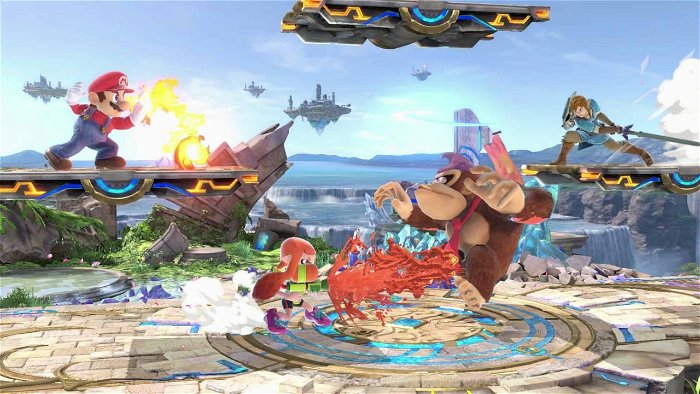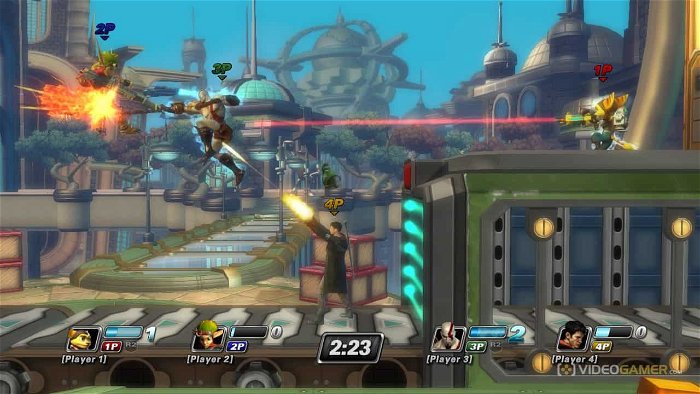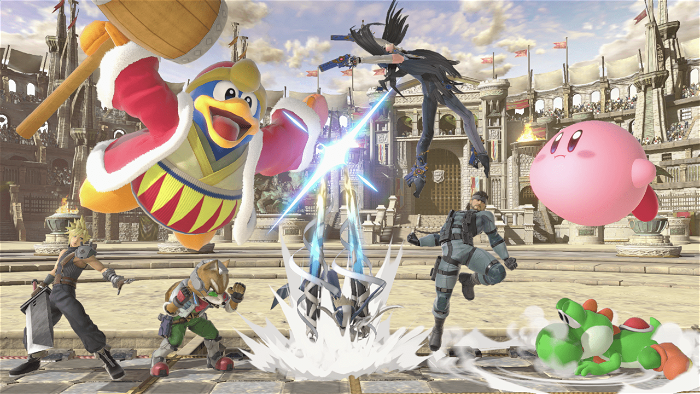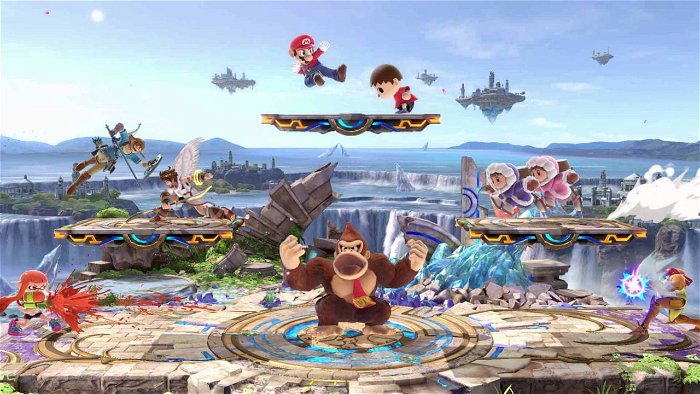The first time I played Super Smash Bros, I was a young lad of 10; I had gone to Canada’s Wonderland and I saw Nintendo had set up a booth demoing the game. I had seen the commercials for it and was somewhat aware of it, so I was excited to give it a go. Being quite obsessed with Pokémon at the time, I selected Pikachu and went up against three strangers far older than I. Luckily, they had chosen Brinstar and by virtue of the rising acid, I managed to win by default.
It was a fighting game I had never experienced. Sure, I was well versed in Super Street Fighter II: The New Challengers, and Killer Instinct on my SNES; but Smash Bros was completely different— even as gaming moved into the 3D era and games like Virtua Fighter and Bushido Blade were adapting 3D plains to their fighting games, they were still rigidly bound to the traditional formulas of 2D fighters. The freedom of movement coupled with the fluidity of combat, the simple yet nuanced controls, the dynamism of stages felt so new to me that despite being fairly simple; when actually playing a round, I had no idea what I was doing.

Super Smash Bros earned an almost immediate legacy status within the fighting game genre; mainly to the point of it being unique as an in-universe Nintendo Franchise fighter. It’s interesting to me that in Smash Bros’ first outing, each character represents Nintendo’s strongest franchises:
Mario and Luigi – Super Mario Bros. (You could argue Yoshi fits into here as well)
Link – The Legend of Zelda
Samus – Metroid
Donkey Kong – Donkey Kong Country
Kirby – Kirby’s Adventure
Fox McCloud – StarFox
Pikachu and Jigglypuff – Pokémon
Captain Falcon – F-Zero
Ness – Earthbound
This may be in part to the N64’s limited hardware (in retrospect) which limited the roster; there may even be an argument that the inclusion of Ness and Captain Falcon were outside of the norm since F-Zero was not a longstanding series, and Earthbound was much more popular in Japan than in North America.
And it’s not like it was the first fighting game to crossover characters, as Marvel vs. Capcom was quite big in the arcades. However, I would argue that a game like Marvel vs. Capcom appealed to a more niche audience since knowing and appreciating its roster was dependent on your exposure to both comics and the wider release of Capcom games. While I can’t speak for many gamers, as a kid I recognized only a small handful of the Marvel characters, and only knew Mega Man and any character from Street Fighter II: The New Challengers—which is to say nothing of barely grasping the complexity of Marvel vs. Capcom’s combat. But I’d argue that almost any gamer back then knew Super Mario, Donkey Kong, Link and Pikachu. I posit that the series took off specifically for the reason that it pitted such recognizable characters from such legacy franchises against each other.

It’s for this very reason that, years later, Sony would fail with PlayStation AllStars Battle Royale. Not only was it a naked attempt to copy Super Smash Bros—badly, I might add— but so much of the roster is padded out with characters who were forgettable, from games released on other consoles, and far too recent to be considered legacy characters; iconic to the PlayStation brand.
And while Super Smash Bros: Melee would go on to polish and refine an already great game; tightening the controls, making the game faster and more fluid, and greatly expanding the roster of Nintendo characters; it was Super Smash Bros Brawl that would mark the beginning of where the series began to transcend itself. While the initial trailer at E3 2006 would floor fans with the inclusion of gaming icons like Kid Icarus’ Pit, and Wario; it was the final moments of the trailer that really stood out. The screen goes black, and we hear the familiar sound of the Codec from Metal Gear Solid. Sure enough, Solid Snake is in Smash Bros Brawl.
While, yes, it can be argued that Metal Gear was released on the NES, I think everyone can agree when you think Metal Gear, you think Playstation— not to mention Hideo Kojima did say the NES version was unfaithful to his original vision. This was the tip of the iceberg: a character commonly associated with a PlayStation franchise appearing in the prestigious Nintendo fighting game. But then something massive happened, something no one saw coming. If you weren’t like me and on the internet every day checking for updates, then you would have had no idea of this character showing up until the very end of the game.
I speak of course, of Sonic the Hedgehog.

This was monumental. If you grew up in the 80’s and 90’s then you knew how deep the rivalry of Sega vs. Nintendo went. To see their biggest mascots duking it out in a game together was unreal. And this is where Smash Bros went from just a Nintendo fighter to something bigger. It was no longer a game about pitting Nintendo characters against each other; now actual gaming icons from other systems were getting in on the action.
And nowhere is that more notable than both Smash Bros 4 and subsequently Smash Bros Ultimate. Smash 4 did include a number of iconic Nintendo characters such as Little Mac, Rosalina, Bowser Jr., and the Villager; it was the inclusion of characters like Pac-Man, Mega Man and the Duck Hunt Dog that made such a huge difference. While these games are fairly synonymous with the NES, they are not wholly synonymous to Nintendo itself: they are icons within gaming.
More to the point, the inclusion of characters like Bayonetta, Cloud, Ryu and Simon Belmont bolster this idea even further. No longer is Super Smash Bros a game about Nintendo characters fighting each other; it’s been shaped into a game where gaming legends come to do battle.

I don’t think I’m alone in this line of thinking, not with the vocal outcry from gamers that Bomberman, another iconic gaming character, was included not as a playable character, but rather as an assist trophy; or the long demand to have Rayman included as a playable fighter. I think as time goes on, Super Smash Bros will continue to feature more characters from gaming’s storied pantheon and it really makes sense. There’s no company more synonymous with gaming than Nintendo, so too should their arena feature the most historic characters in the medium.




